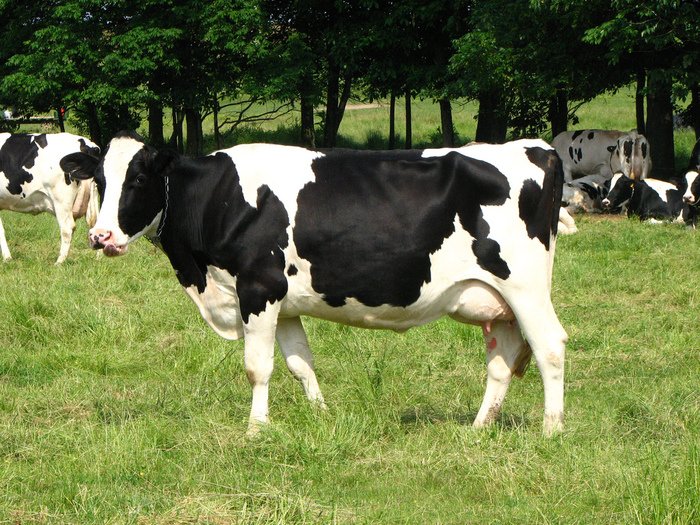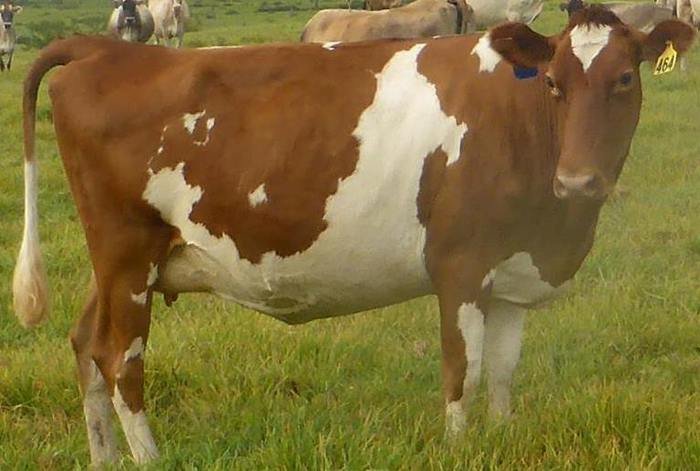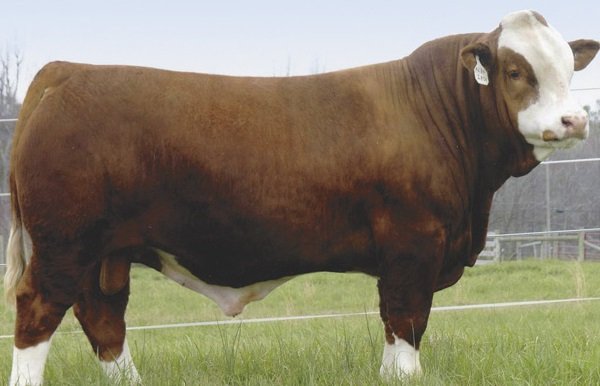DAIRY CATTLE

HOLSTIEN FRIESIAN CATTLE

JERSEY CATTLE

BROWN SWISS CATTLE

GUERNSEY CATTLE

AYRSHIRE CATTLE

DUTCH BELTED CATTLE

MILKING SHORTHORN CATTLE

DEXTER CATTLE

NOWEGIAN RED CATTLE

NORMANDE CATTLE
Cows are curious and friendly animals. They like to be in groups, not alone, and that's why you see them in a herd. Like many animals, cows establish a pecking order - quickly. With change, the pecking order realigns, which can be stressful for the cows.
General Info
Cows spend about six hours eating and eight hours chewing cud per-day. They will spend around four hours a day sleeping, taking very short naps. The girls sleep laying down while chewing cud.
Cows have almost total 360-degree panoramic vision, and they can see color! Cows have a great nose and can smell up to six miles away.
Cows need to have recently given birth in order to produce milk. Cows are bred at approximately 15 months and the gestation period is nine months, the same as a human. Cows like cool temperatures - 50°-60° F - milk production goes down in high temperatures.
Feeding Cows
What a cow eats is very important for her digestion, milk production and milk quality. Crystal Farm has formulated a special blend of feed to meet all the needs associated with the health and wellbeing of our cows, as well as for maximum milk production. Their feed consists of a mixture of:
There are a few sayings that have been derived from cows such as:
"Digest an idea"
"Chew the cud"
Ruminate = ponder or think about! Keys to Superior Animal Treatment & Care
Holstein Friesian Cattle
Jersey Cattle
Brown Swiss Cattle
Guernsey Cattle
Ayrshire Cattle
Dutch Belted Cattle
Milking Shorthorn Cattle
Dexter Cattle
Nowegian Red Cattle
Normande Cattle
BEEF CATTLE

Angus Cattle

Charolais Cattle

Hereford Cattle

Simmental Cattle

Texas Longhorn Cattle

Gelbvieh Cattle
A combination of breeds or any specific breed in any breeding program has a considerable effect on the profitability and efficiency of the cattle production industry. Each breed has its own reproductive efficiency, growth rate, maternal abilities, and because of these differences, the end product specification varies from one breed to another.
The production cost and overall nutritional requirements are entirely dependent on the type of breed as these are related to the size of the animal and the rate of growth. Therefore, in cross-breeding programs, it is essential to select suitable breeds.
The cattle producers select the breeds for their production businesses according to their market value and rare characteristics in order to gain greater profits. Some of the factors that cattle producers keep in mind while selecting the beef cattle breeds include the market demand of the breed, availability of pure-bred seed-stock, its cost, quality and quantity of available feed staff, and its production system.
ANGUS CATTLE
(RED & BLACK)
CHAROLAIS CATTLE
HEREFORD CATTLE
SIMMENTAL CATTLE
TEXAS LONGHORN CATTLE
GELBVIEH CATTLE
BRAHMAN CATTLE
LIMOUSIN CATTLE
ZEBU CATTLE
WAYGU CATTLE
AIR FREIGHT TRANSPORT


